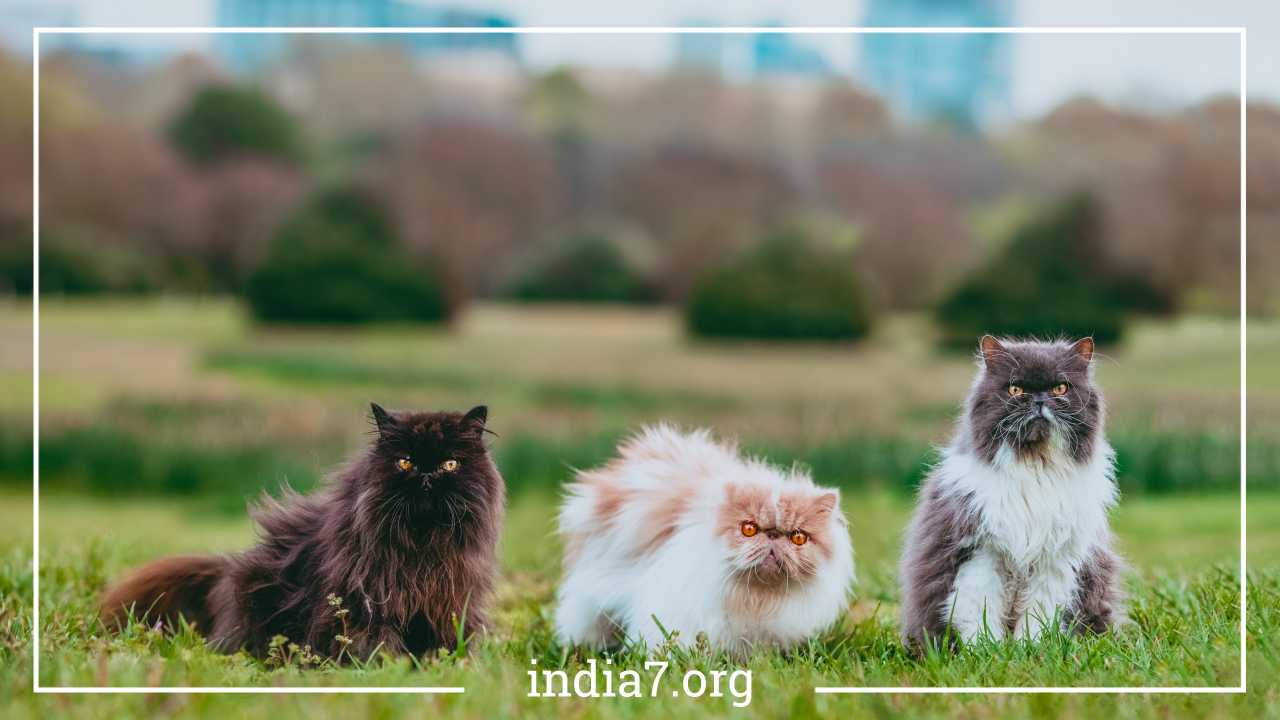Caring for Persian Cats: Raising Happy and Healthy Felines

Persian Cats
Persian cats are undoubtedly one of the most iconic and beloved cat breeds worldwide. With their gentle and sweet personalities, luxurious long fur, and charming appearances, they have captured the hearts of countless cat enthusiasts.
In this comprehensive guide, we will delve into the intricate aspects of caring for Persian cats, providing you with an in-depth understanding of their needs, behaviors, and the steps required to ensure their well-being.
I. Understanding Persian Cats
- Origin and History: Persian cats, also known as Persian Longhairs, have a rich history that dates back several centuries. They are believed to have originated in Persia (modern-day Iran), and they were introduced to Europe in the 1600s. Over time, they have become one of the most popular cat breeds globally.
- Physical Characteristics: Persian cats are known for their distinct appearance. They have round faces, short noses, and large, expressive eyes. Their most prominent feature is their long, flowing coat, which comes in various colors and patterns. These cats have a sturdy and medium-to-large build, with a bushy tail that complements their overall elegance.
- Temperament and Personality: Persian cats are renowned for their gentle, sweet, and calm personalities. They are typically affectionate and enjoy being pampered by their owners. Unlike some more active cat breeds, Persians are content with a relaxed indoor lifestyle. They are known for their melodious voices and use them to communicate their needs.
- Intelligence and Adaptability: While Persian cats may not be the most agile or adventurous cats, they are intelligent and adapt well to indoor living. They enjoy routines and the comforts of home, making them ideal pets for those who prefer a more tranquil and predictable environment.
II. Caring for Persian Cats
- Indoor Living: One of the cardinal rules of Persian cat care is keeping them indoors. This is essential for several reasons:
- Protecting their coat from damage: Persian cats have long, flowing fur that is prone to tangling and matting. Outdoor adventures can result in dirt, debris, and pests that can damage their coat.
- Health and safety: Indoor living minimizes the risk of accidents, encounters with aggressive animals, and exposure to diseases.
- Grooming and Coat Maintenance: Maintaining a Persian cat’s coat can be a significant commitment, but it’s vital for their health and well-being. Here are some grooming tips:
- Daily brushing with a metal comb: This helps prevent matting and hairballs.
- Regular bathing: Bathing is best introduced when the cat is young to get them accustomed to the process. Regular baths keep their coat clean and healthy.
- Eye care: Persian cats have large eyes that may require regular cleaning to prevent eye discharge buildup.
- Feeding and Nutrition: Proper nutrition is crucial for the overall health of your Persian cat. Consult with your veterinarian to determine the best diet for your specific cat’s needs, but generally:
- High-quality cat food with appropriate protein and fat content is recommended.
- Fresh water should always be available.
- Avoid feeding them human food, which can be harmful.
- Healthcare: Regular veterinary care is essential for maintaining your Persian cat’s health. Some key healthcare aspects include:
- Annual check-ups: Schedule regular vet visits to ensure your cat’s well-being and address any emerging health concerns.
- Vaccinations: Keep your cat up-to-date with vaccinations to protect them from common feline diseases.
- Dental care: Dental hygiene is vital; consider regular dental check-ups and brushing your cat’s teeth.
- Litter Box Training: Persian cats are generally fastidious about their litter boxes. Ensure you:
- Use a suitable litter box with low sides for easy access.
- Keep the litter box clean by scooping waste daily and changing the litter regularly.
III. Understanding Persian Cat Behaviors
- Communication: Persian cats are excellent communicators and use various means to express themselves:
- Vocalization: They have melodious voices and use meows, purring, and other sounds to convey their needs.
- Body language: Pay attention to their posture, tail position, and ear movements, which can offer insights into their mood.
- Playfulness: While Persian cats are not known for high-energy play, they enjoy gentle play sessions with their owners. Interactive toys and feather wands are often appreciated.
- Social Interaction: Persian cats are typically sociable and enjoy the company of their human family members. They may also get along well with other pets, provided introductions are gradual and supervised.
IV. Common Health Issues and Precautions
- Respiratory Problems: Persian cats are prone to respiratory issues due to their flat faces (brachycephalic), a condition known as brachycephalic airway syndrome. Ensure they have proper ventilation and avoid exposure to extreme heat.
- Eye Conditions: Persian cats are susceptible to various eye conditions due to their large eyes. Common issues include tear staining and eye discharge. Regular eye cleaning and vet check-ups are essential.
- Dental Health: Dental problems can arise due to their facial structure. Brushing their teeth and providing dental treats can help maintain oral health.
- Kidney Disease: Persian cats are more susceptible to kidney disease. A balanced diet, adequate hydration, and regular vet visits can help monitor and manage this risk.
V. Persian Cats in Competition
Persian cats are a prominent presence in cat competitions worldwide. They are categorized into seven color divisions for competitions, each with its own set of standards. These divisions include solid, silver and gold, tabby, shaded and smoke, particolor, bicolor, and Himalayan.
In cat shows, judges evaluate Persian cats based on factors such as coat quality, color, body structure, temperament, and overall presentation. Owners interested in showing their Persian cats should be prepared to invest time in grooming and training their cats for the competition circuit.
VI. Conclusion
In conclusion, Persian cats are cherished for their beauty, gentle nature, and distinctive appearance. While they require some specific care, including grooming and indoor living, the rewards of having a healthy and content Persian cat are immeasurable. By understanding their needs, behaviors, and common health issues, you can provide the best possible care for your beloved feline companion. Persian cats have a unique way of capturing hearts, and with proper care, they can be treasured members of your family for many years to come.



